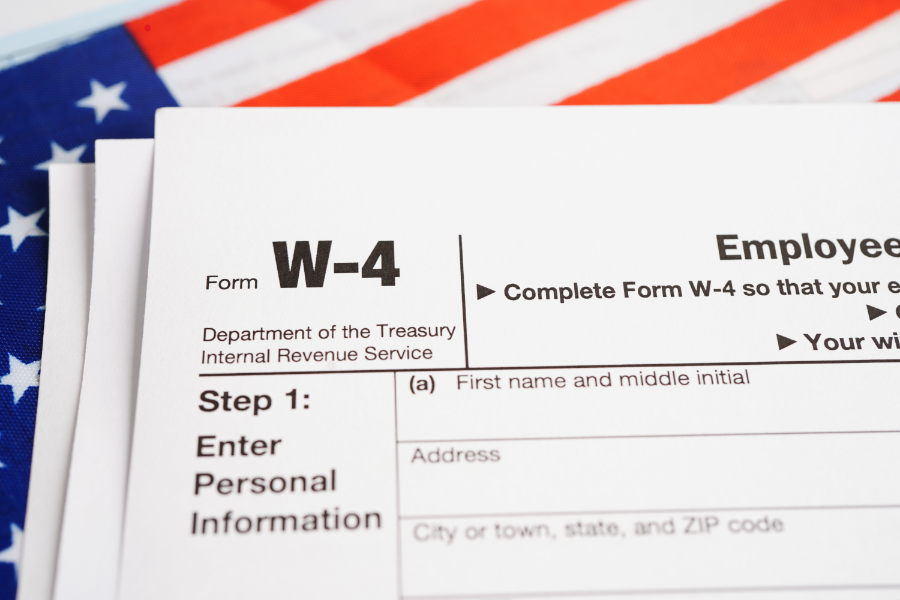One of the essential documents you need when working in the United States is the Form W-4 provided by the IRS (Internal Revenue Service). This form instructs your employer on how much federal income tax to withhold from your paycheck. By filling it out correctly, you can avoid overpaying taxes and also prevent any shortfalls that may require additional payments. In this article, we will explain in detail how to fill out the 2024 Form W-4 based on the latest information.
- Purpose of Form W-4
- Filling Out Basic Information
- Fill in Only the Necessary Sections
- For Multiple Jobs or Working Spouses
- Claiming Dependents
- Additional Adjustments (Optional)
- Signing and Submitting
- Annual Updates Recommended
- About the Underestimated Tax Penalty
- How to Avoid the Underestimated Tax Penalty
- Summary
Purpose of Form W-4
The purpose of Form W-4 is to ensure the correct amount of federal income tax is withheld from your paycheck. If not filled out correctly, you may end up paying a large amount of taxes at the end of the year, or you might have too much tax withheld. Whenever you experience life events or changes in income, be sure to submit a new Form W-4.
Filling Out Basic Information
First, fill in your basic information. This includes your full name, address, Social Security Number (SSN), and marital status. For marital status, you can select single, married (whether your spouse works or not), or head of household.
Fill in Only the Necessary Sections
For Form W-4, you generally only need to complete Step 1 and Step 5. Steps 2 through 4 are sections to fill out if special adjustments are needed, such as when you have dependents or require additional withholding. If no special adjustments are necessary, filling out just Step 1 and Step 5 is sufficient.
For Multiple Jobs or Working Spouses
If you have multiple jobs or if both you and your spouse work, use Step 2. In this step, you can choose from three options: option (a) for the most accurate additional tax amount, option (b) which is slightly less accurate, or option (c) which splits the standard deduction and tax rates between both jobs.
Claiming Dependents
If you have dependents, enter their information in Step 3. You can claim a deduction of $2,000 for each child under 17 and $500 for each other dependent. This will adjust the amount of tax withheld from your paycheck.
Additional Adjustments (Optional)
In Step 4, you can enter other income, additional deductions, and extra withholding amounts. This section should be filled out if you have non-wage income such as dividend income, interest income, rental income, or income from the sale of virtual currency or stocks.
- Step 4(a): This section is for reporting other income (income other than wages). This includes dividend income, interest income, rental income, and income from the sale of virtual currency or stocks.
- Step 4(b): Enter the amount of deductions other than the standard deduction. This section applies to estimated medical expenses, mortgage interest, charitable contributions, and other similar items.
- Step 4(c): This section is for specifying additional withholding amounts. If the taxpayer wants to increase the withholding amount, enter the desired amount here.
Signing and Submitting
Finally, sign and date the bottom of Form W-4. This makes the document official, and you can then submit it to your employer.
Annual Updates Recommended
Since tax laws and personal circumstances can change each year, it is recommended to submit a new Form W-4 to your employer every December for the upcoming year. This ensures that the correct amount of tax is withheld based on the most current information.
About the Underestimated Tax Penalty
If you do not withhold enough tax from your paycheck, you may have to pay an underestimated tax penalty. This penalty is imposed when you fail to properly estimate the amount of tax you owe throughout the year and adjust your withholding accordingly.
How to Avoid the Underestimated Tax Penalty
To avoid this penalty, keep the following points in mind:
- Set the Appropriate Withholding Amount: Accurately complete Form W-4 to ensure the correct amount is withheld from your paycheck.
- Regular Reviews: Update your Form W-4 promptly if there are changes in your salary or other income sources.
- Use the IRS Estimation Tool: Utilize the IRS online tool to calculate the precise withholding amount and complete your Form W-4 based on the results.
- Set Additional Withholding Amounts: If you anticipate a higher tax liability, use Step 4(c) on Form W-4 to set an additional withholding amount.
- Quarterly Estimated Tax Payments: If you have additional income from freelancing or side jobs, consider making quarterly estimated tax payments.
By taking these measures, you can ensure you pay the appropriate amount of tax throughout the year and avoid the estimated tax underpayment penalty.
Summary
Accurately completing Form W-4 is crucial for ensuring the correct amount of tax is paid throughout the year. Incorrectly filling out the form can result in either excessive withholding or the need to pay additional taxes. If necessary, consult with your employer’s HR or accounting department, or seek advice from a professional to ensure accuracy. By reviewing and updating your Form W-4 annually and setting the appropriate withholding amount, you can work with peace of mind.




Comment